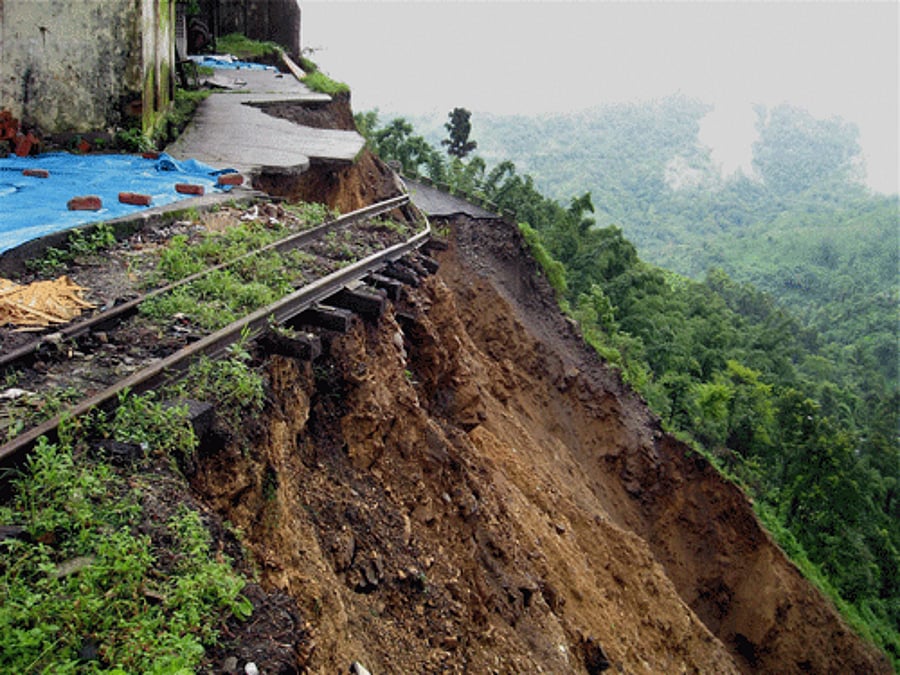Editorial, EOI, 30 May 2024 : For the people of the hills of Darjeeling, Kalimpong and Sikkim, landslides are of common occurrence. Now in the wake of the devastating landslide in the mountainous Enga province in Papua New Guinea late last week with estimates of the death toll varying between 670 and 2,000 the University of Sydney has offered some explanations as to what causes landslides and if landslides can be predicted to save lives.
As the Papua New Guinea experience has underscored, rescue is challenging in the event of a landslide. Secondary slides and rock falls hamper efforts in the search zone. Because of lack of access, it becomes difficult to move heavy digging machinery to the landslide zone. Roads need to be cleared or repaired for assistance and equipment to arrive. t is difficult to locate potential survivors as landslides carry away buildings and their occupants in an unpredictable manner.
Landslides happen when the pull from gravity exceeds the strength of the geomaterial forming the slope of a hill or mountain. Geomaterials can be as varied as rocks, sand, silt and clays. Then, part of this slope starts sliding downhill. Depending on where the slope fails, the material sliding down can be just a few cubic metres or a few million cubic metres in volume.
But why do slopes fail?
Most natural landslides are triggered by earthquakes or rainfall. Earthquakes shake the ground, stress it and weaken it over time. Rainwater can seep through the ground and soak it and add weight to the slope. The ground is often porous like a sponge.
Another adverse effect of water is erosion, causing slopes to fall. Groundwater can also dissolve rocks within slopes. Human activities also contribute to the chance of landslides. Deforestation has a negative impact on slope stability, as tree roots naturally reinforce the ground and drain water out. Mine blasts produce small earthquake-like ground vibrations that shake slopes nearby. It is difficult to predict and mitigate landslide risk effectively.
The thousands of deadly and costly landslides occurring every year worldwide suggest so. To warn people of a coming landslide, one would need a prediction for earthquakes and rainfall, in addition to a perfect knowledge of the slope-forming geomaterial.
Geomaterials may include multiple, entangled layers of various kinds of rocks and particulate materials, such as sand, silt and clays.
Their strength varies, and their spatial distribution dictates where the slope is likely to fail. To accurately assess the stability of the slope, a three-dimensional mapping of these materials and their strengths is needed. No sensor can provide this information, so geologists and geotechnical engineers must deal with partial information obtained at a few selected locations and extrapolate this data to the rest of the slope.
The weakest link of the chain, such as an existing fracture in a rock mass, is easily missed. This is an inevitable source of uncertainty when trying to predict how much material might slip. It is known that the larger the volume of a landslide, the farther its runout distance. But it is hard to gauge the exact size of a landslide, making predictions of runout distances and safe zones uncertain.
It is always uncertain when a landslide will occur. Mechanical analysis enables one to estimate the vulnerability of a slope in a particular scenario, including earthquake magnitude and distribution of groundwater. But predicting if and when these triggers will happen is a difficult task.

